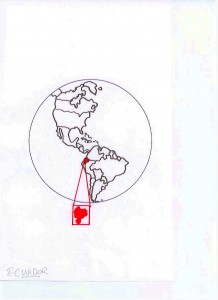ECUADOR
A. THE COUNTRY
The Republic of Ecuador, in South America, has Amazon desert, high
Andean Sierra and fertile Pacific coastal plain, and also includes the
Galapagos Islands (1000 km. to the west). There is little political
stability; presidents rarely last even 18 months in the job. The
broadening democracy brings some political voice to the long-oppressed
Quichua. The need for constitutional reform and political
house-cleaning is evident, and Ecuador is aligning with assertive
leftist governments in other parts of South America. The main exports
are oil, flowers, shrimp and bananas. Oil exploitation enriches a small
minority. Poverty is rife and economic disparity massive.
B. THE PEOPLE
The population is ~13,776,000 and the official language Spanish.
~56.4% are Spanish-speaking, ~40.8% Amerindian, ~2.8% Other
(English-speaking, German-speaking, Middle Easterners, East Asians).
C. RELIGIONS AND CHRISTIANITY/PENTECOSTALISM
The culture is strongly molded by Catholicism, but the privileged
position is eroding as evangelicals and marginal groups rapidly
increase. Rural populations are not so receptive to change. There are
sporadic local incidents of mob violence, burning of churches and
intimidation against evangelicals.
~94.45% claim to be Christian, ~4.85% Non-religious, ~0.36%
Ethnoreligionist, ~0.16% Chinese, ~0.14% Baha’i, ~0.03% Muslim, ~0.01%
Jewish. In the Christian category:
~80.58% are Catholic, ~6.05% Protestant, ~3.3% Unaffiliated, ~3.11% are
groups originating in Western society considered ‘marginal’, ~2.44%
Independent, ~0.02% Anglican, ~0.02% Orthodox.
Evangelicals represent ~8.5% of the population.
Charismatics represent ~7.8% and of those ~4.8% are Pentecostals.
Donna Siemens
http://en.wikipedia.org
References:
Operation World, Jason Mandryk. Colorado Springs: Biblica Publishing, 2010

